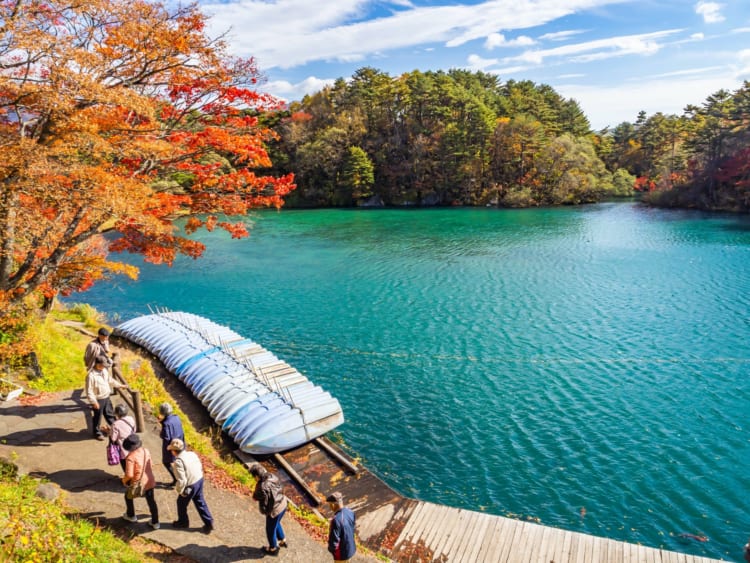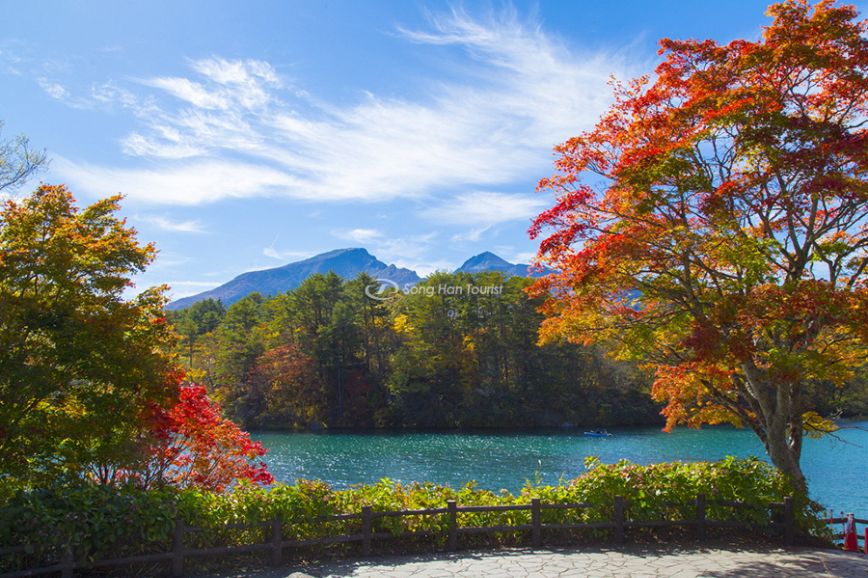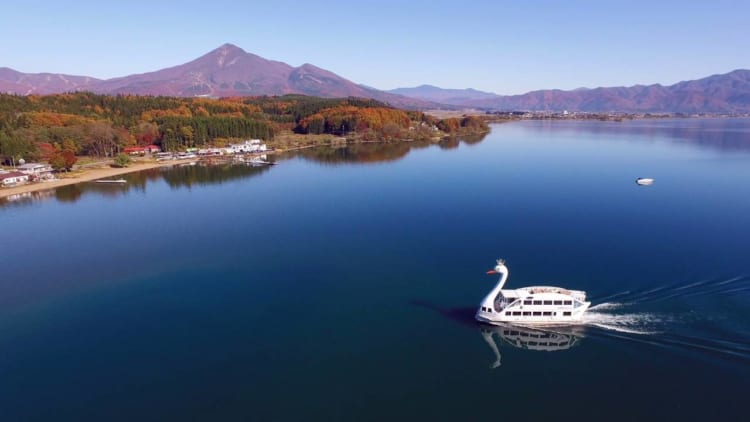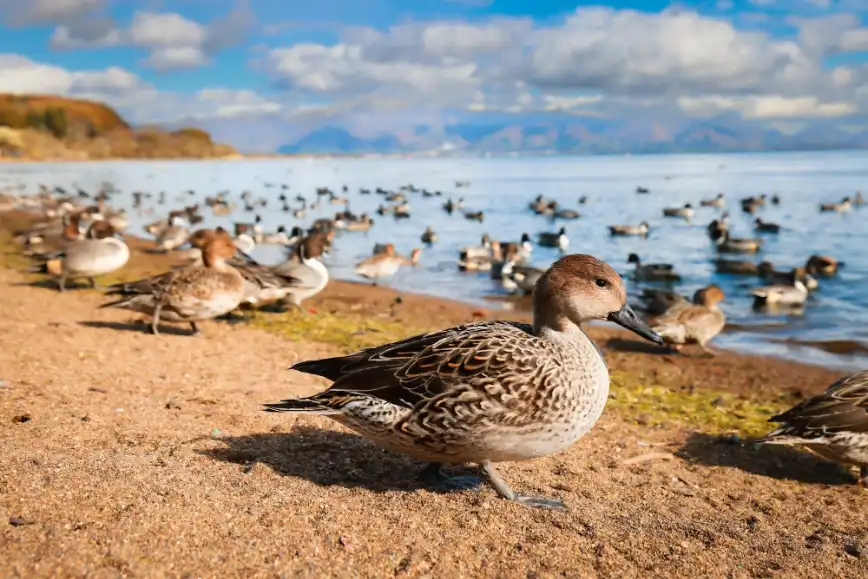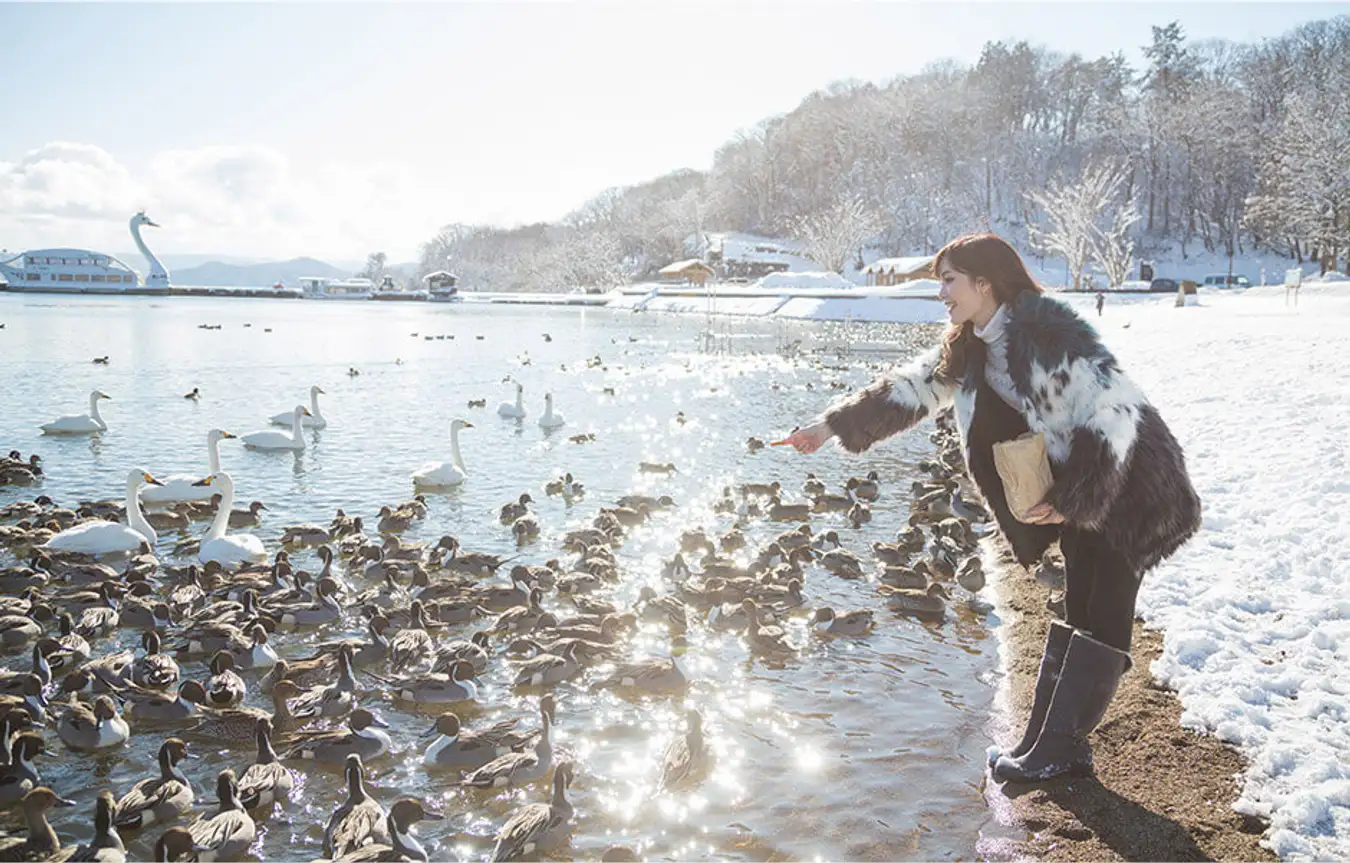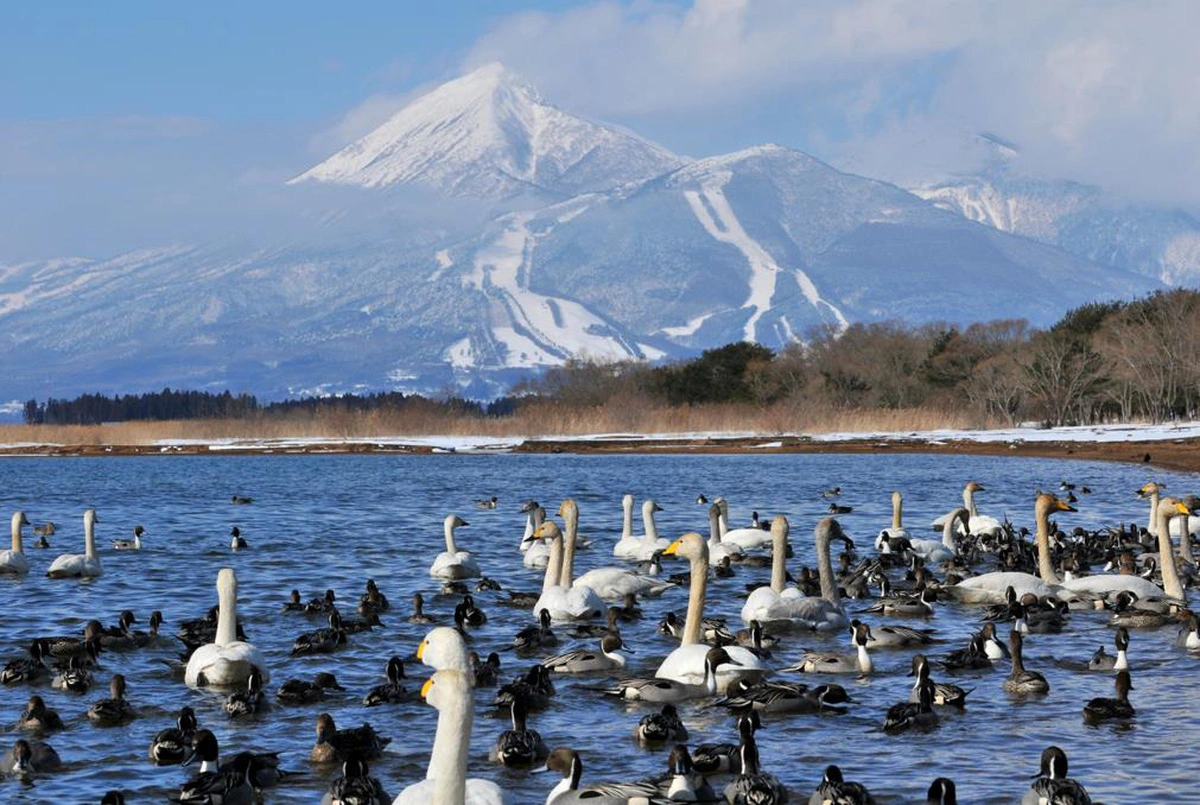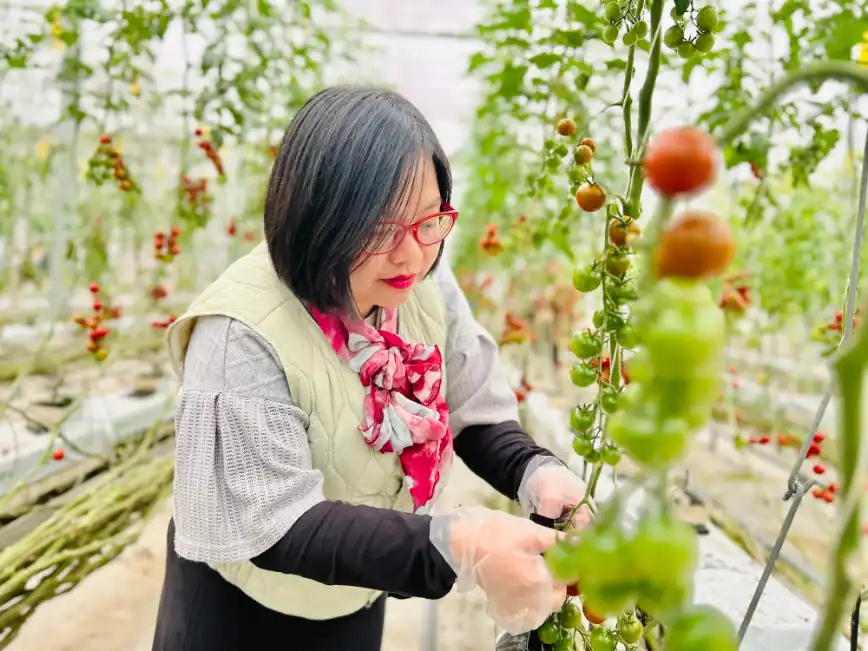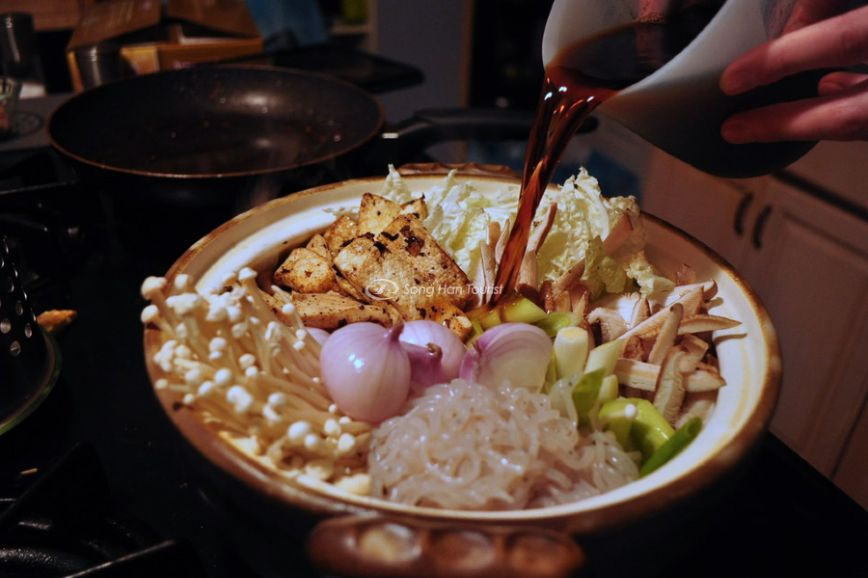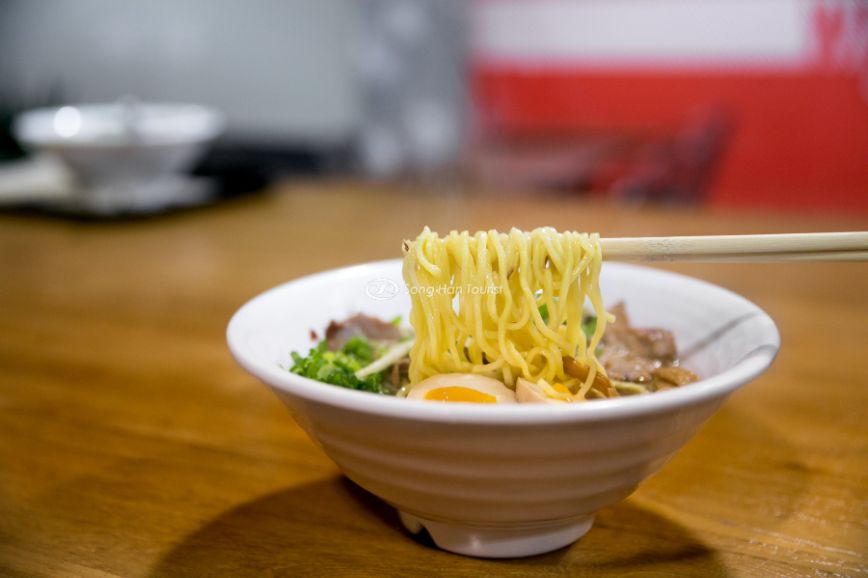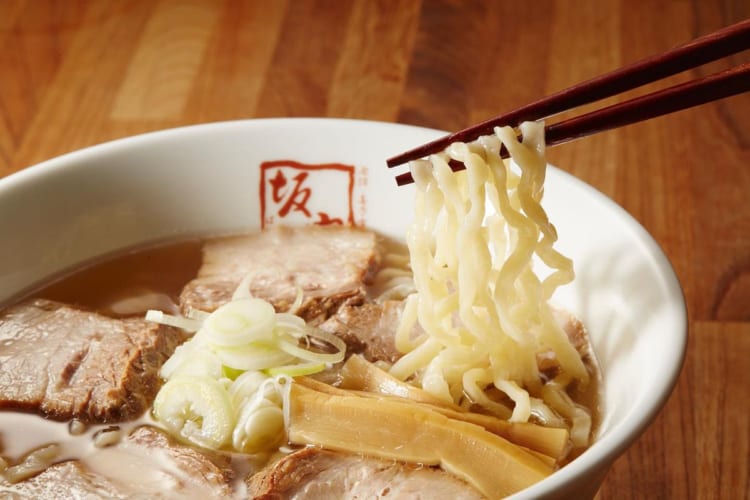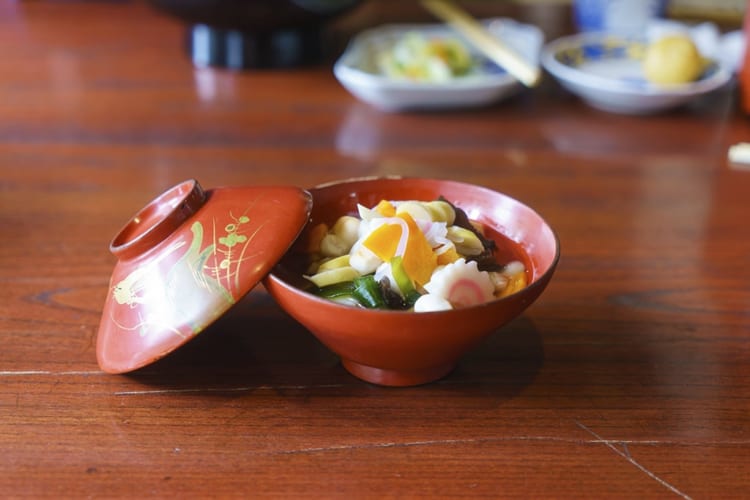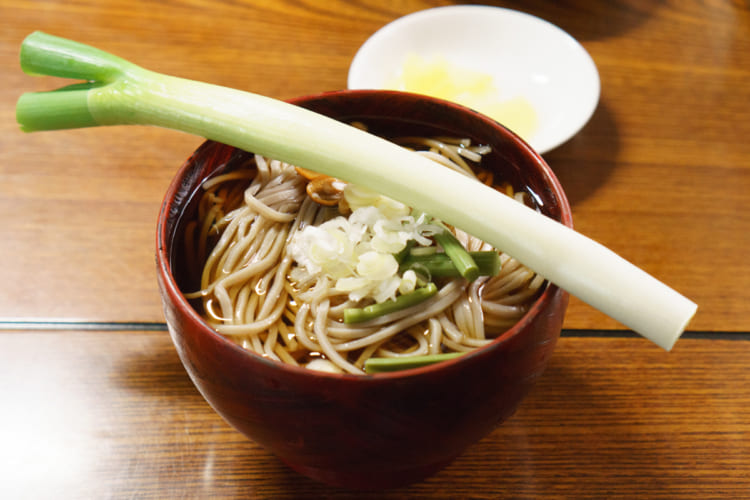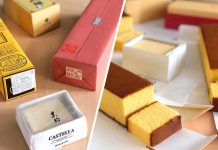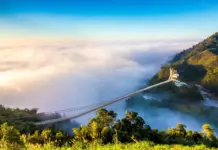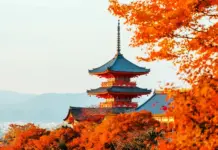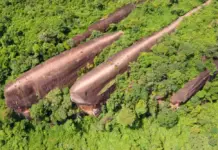This is a place where more than 40 varieties of cherry blossoms from all over the world are planted on 8,000 square meters of land, from simple cherry blossoms to those with more layers of petals such as Yaezakura, Kikuzaki, …
- The ULTIMATE Uji travel guide: Top attractions, best things to do in Uji Kyoto, Tips & MORE
- Kyoto itinerary 5 days: How to spend 5 days in kyoto perfectly?
- 19+ best sightseeing spots & most beautiful places to see in Japan: Mountains – Forests – Seas – Cities
- The ULTIMATE Gifu travel guide: Top attractions, best places to visit, stay & MORE
- The SUPER Hokkaido travel guide: Top attractions, best things to do, stay & MORE
The trees here have many different shapes and sizes, but most of them are short. There are many rows of trees that form beautiful flower arches for you to pose.
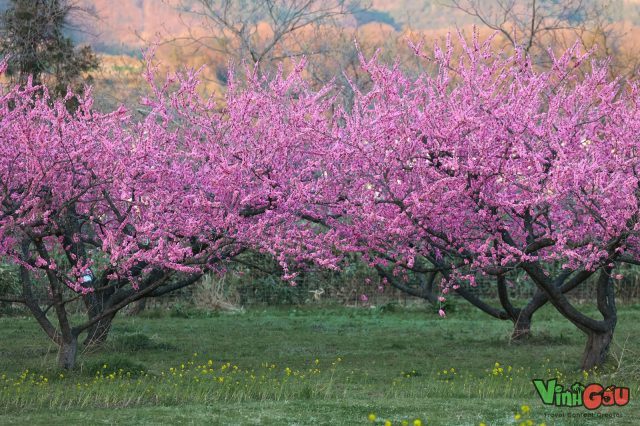
Early morning when the sun just rises and 10 hours before sunset are the two best times for you to enjoy this garden.
How to get there: Take the train to Iizaka Onsen Station and walk another 20 minutes to get here.
Hanamiyama Flower Garden
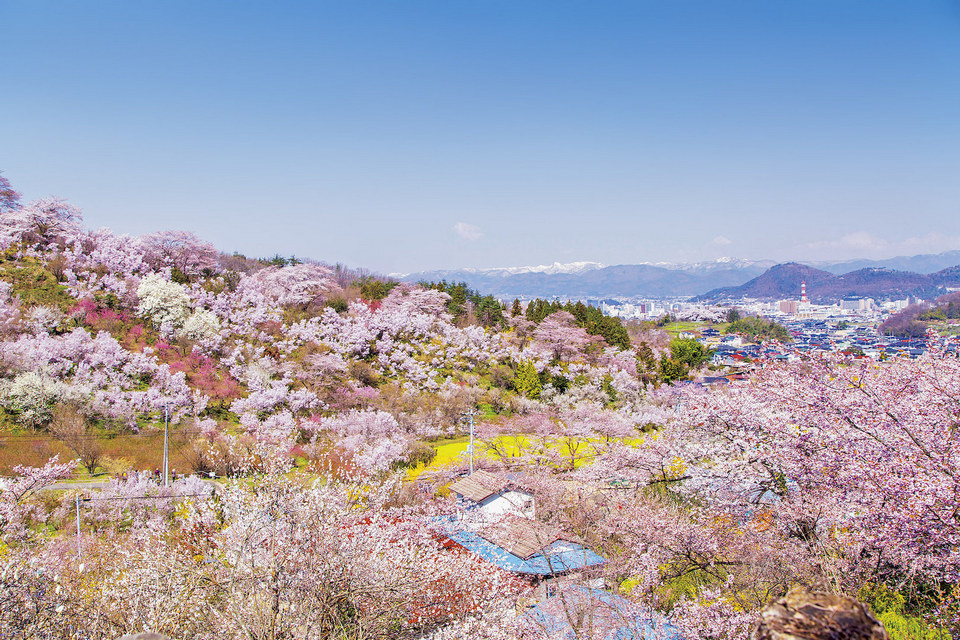
The locals have been cultivating the forest around their area since 1936 to plant flowers. And when these beautiful flower forests became known to many people, in 1959, the area was named Hanamiyama, meaning “Flower Viewing Mountain” and opened to welcome visitors.
As its name suggests, when you come here, you will enjoy the hills covered in many colors of flowers around here, such as: cherry blossoms, plum blossoms, camellias, rapeseed flowers, etc.
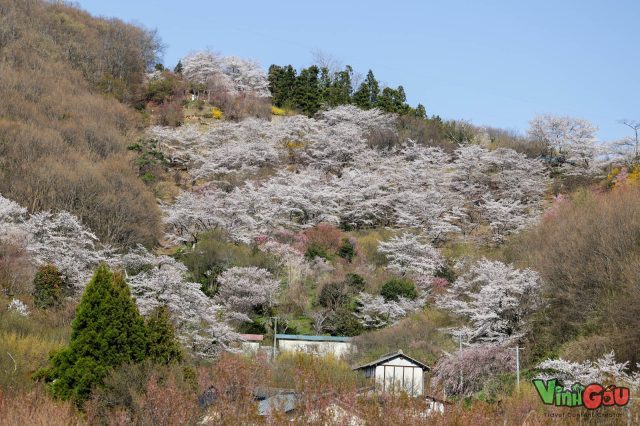
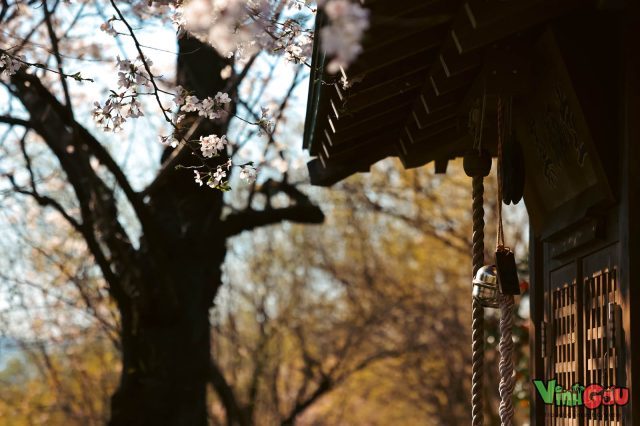
I like sitting on the hill, listening to the bells from the small temple nearby and watching the daily life of the locals here. Some people are digging the ground to grow vegetables, children in school uniforms are chattering all the way home, or young people are holding hands to see the cherry blossoms. A truly vivid picture of spring.
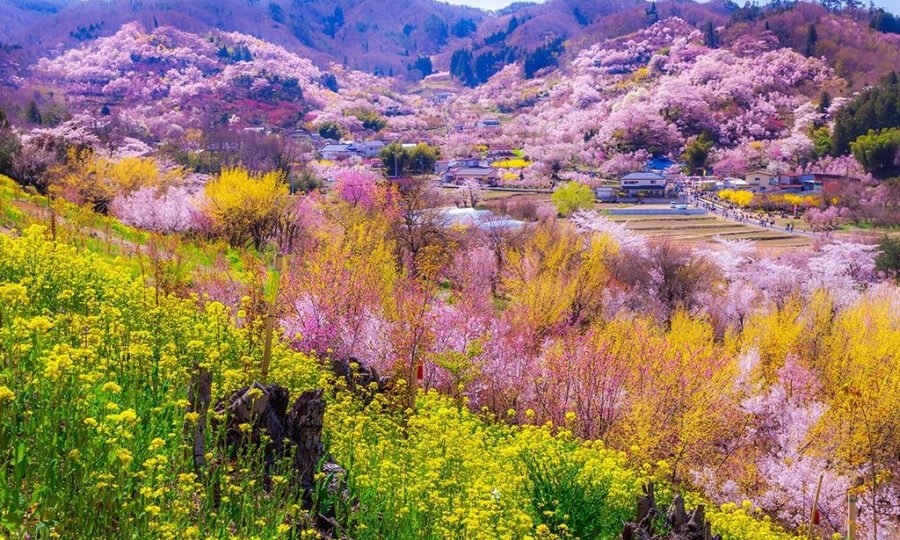
How to get there: Take the train to Fukushima Station and take the bus straight to this park.
Marunaka Strawberry Garden
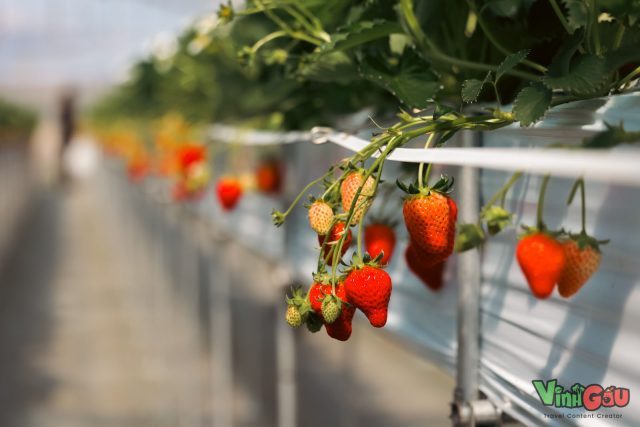
You can come here to enjoy plump strawberries at any time of the year, because they grow strawberries in greenhouses, so the weather outside doesn’t affect much.
The strawberries here are divided into rows. The rows are sweet and sour, the rows are just sweet. Pick whichever fruit you like. The strange thing is, they eat strawberries with condensed milk here, so the taste is a little sweeter but also has a rich flavor. Worth a try.
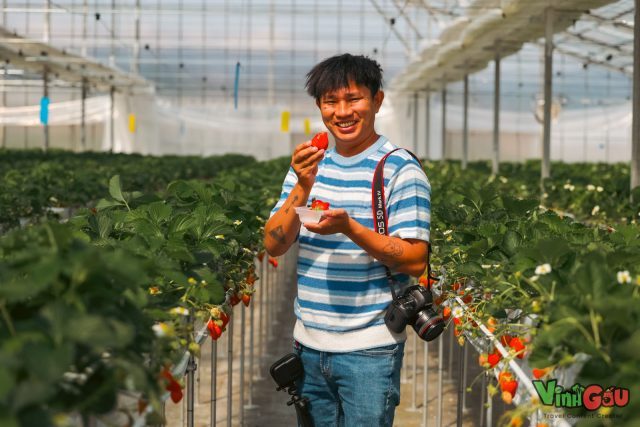
The price for an adult is 2,200 Yen & you can eat until you’re tired for 30 minutes.
Yamatogawa Sake Brewery
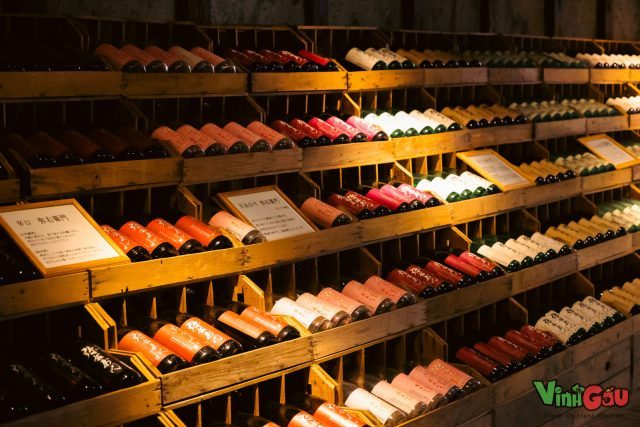
Fukushima is one of the places with the best sake breweries in Japan thanks to the clear water from nature, the delicious rice fields and the talented, long-standing sake makers. A typical example is the Yamatogawa sake brewery, which is over 230 years old.
This brewery has been producing sake since 1790 with clear water from Mount Iide. When you come here, in addition to tasting the sake of this brewery, you can also experience drinking water directly from Mount Iide.
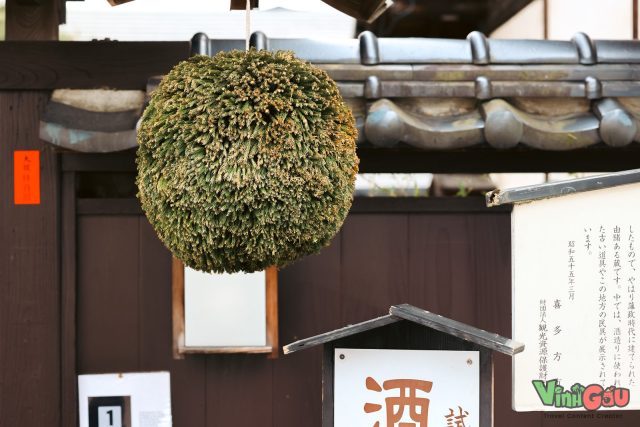
At breweries, they often hang a ball made of leaves of cedar in front of the house to signal the status of their batch of sake. If the ball is green, it means they have just brewed a new batch of sake. If the ball gradually turns brown, it means the batch of sake is finished. This process usually lasts about 9-10 months.
Nicchu Railway
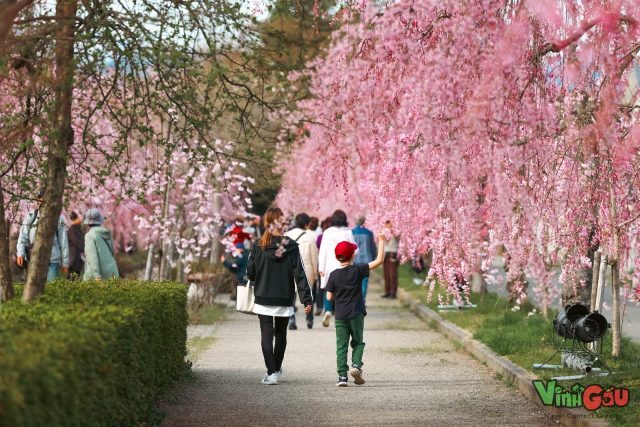
In the past, this railway line connected Kitakata City and Atsushio Onsen Town. After ceasing operations in 1984, the road was re-planned for cyclists and pedestrians. This road is only about 3km long but has up to 1000 weeping cherry blossom trees, making this road more beautiful and poetic every spring.
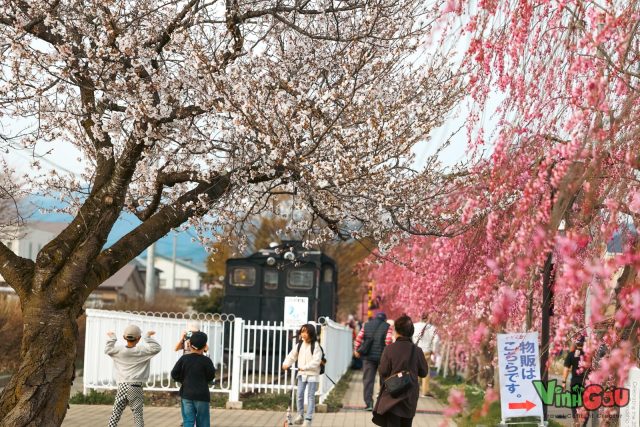
In addition, there is also a display of the steam locomotive that was once used to operate the Nicchu Line for everyone to admire.
Nugochi Museum
Does this name sound strange to you? But this person is printed on the Japanese 1000 Yen bill – an extremely popular denomination in Japan.
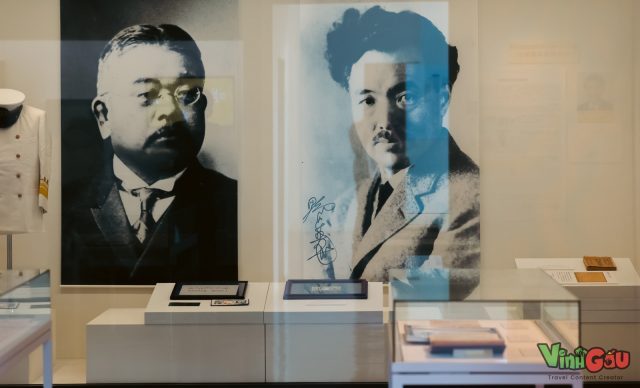
He is a famous bacteriologist born in Fukushima Prefecture. He is known for contributing to finding the cause of syphilis and the cure for yellow fever.
In addition, he is also a typical example of “other people’s children” when he accidentally fell into a fire in his house when he was a child, causing his left hand to become paralyzed. However, he did not let that inferiority complex hold him back, he tried to study, research and succeeded on the path he chose. And he is the pride of Fukushima Prefecture in particular and of Japan in general.
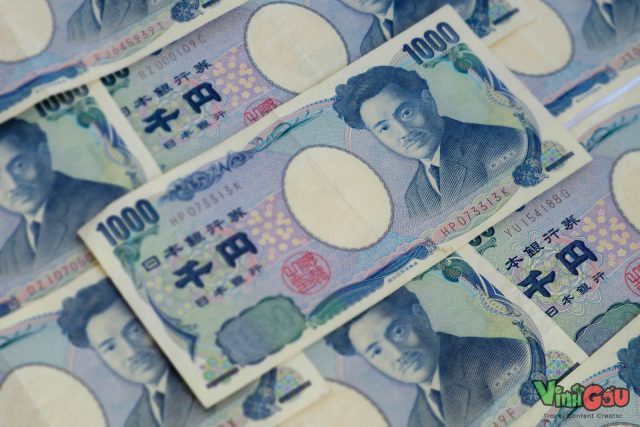
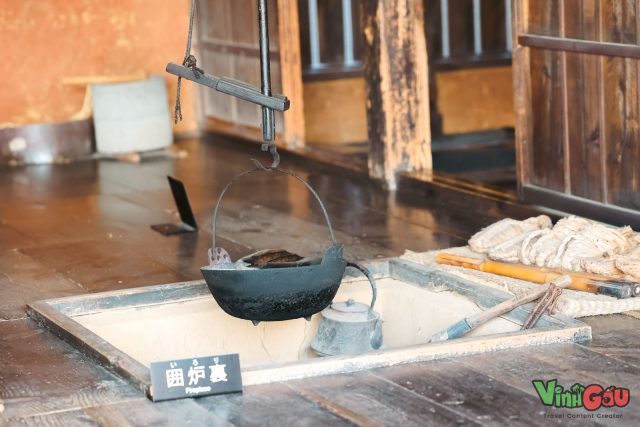
The museum has a reconstructed place of his childhood home and a floor displaying many artifacts he used, letters, research papers… to tell the story of his successful career development.
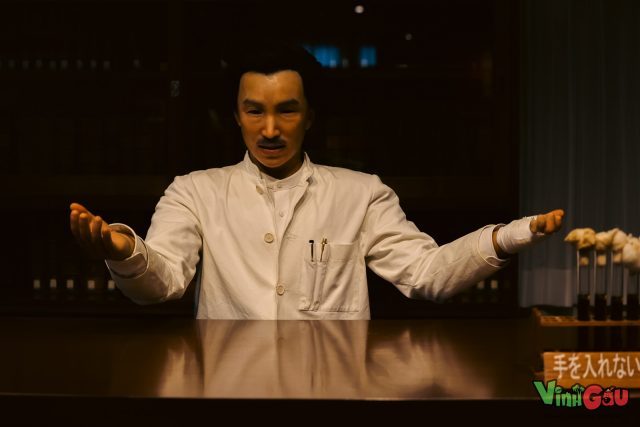
Bandai Asahi National Park
This place possesses wild natural beauty and a landscape that changes with the seasons, visitors will be captivated by the brilliant red, orange and yellow of the leaves. This unique landscape creates a perfect picture, making every step visitors take a journey to enjoy the colors.
The vast Bandai-Asahi National Park also has a diverse network of trails leading to Mount Haguro, Lake Hibara, Midagahara Marshlands… mysterious and beautiful. Visitors can freely explore by walking, climbing, or even cycling, enjoying the majestic scenery and relaxing in the rustling sound of falling leaves.
Goshiki-numa Ponds
There are many names for this lake such as: five-color lake, jade green lake, emerald lake… Whatever the name, Goshiki-numa lake still has a poetic appearance but is no less elegant and unique.
The reason why Goshiki-numa blue lake is called the five-color lake. Because when you come here, you will see the many shades of sky, earth, trees, water color and scenery blending together. Because the lava of the volcano flows down and accumulates over time, the color of the lake’s water turns into a unique jade green color.
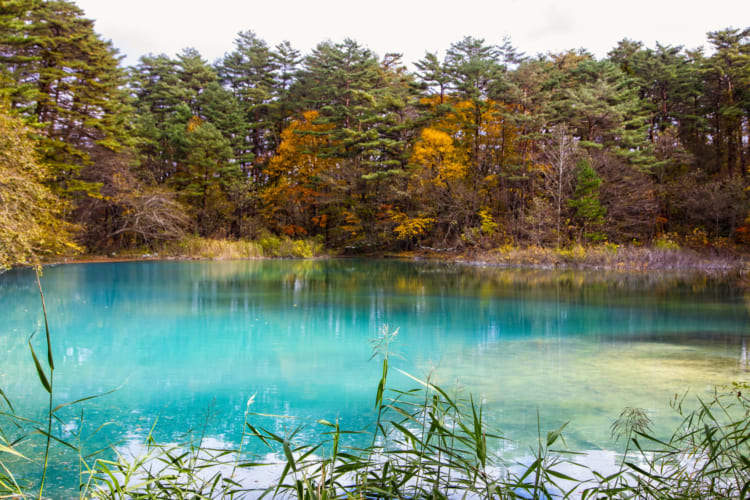
The slope of Goshiki-numa lake area is not too high. Therefore, this place is extremely suitable for walking, sightseeing or rowing a boat out to the middle of the lake to enjoy the fresh air of Fukushima.
Known as the ‘Five-Colored Lake’, this is a must-see spot during the fall in Fukushima. Each lake has its own color that changes depending on the season, weather, and time of day.
Adatara Kogen Dake Onsen
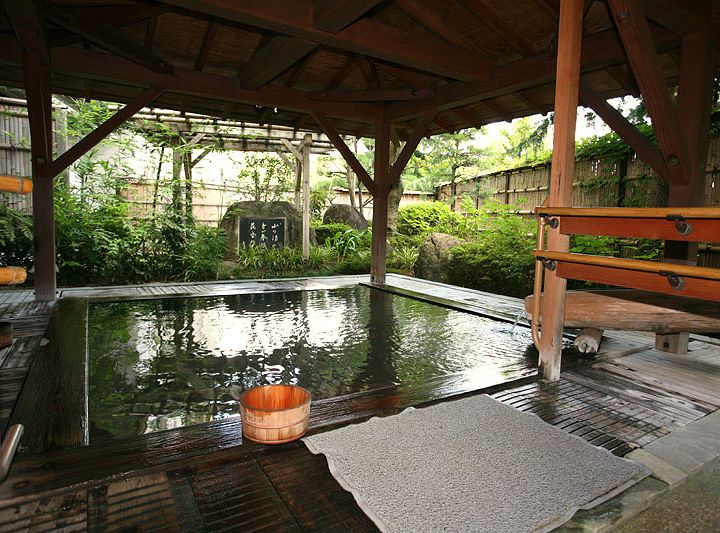
In Dake Onsen, there are a total of 11 ryokans, 3 inns, and 4 guesthouses. Adatara Kogen Dake Onsen is a rare acidic hot spring in Japan, with natural steam escaping from the spring. This hot spring is said to be effective in healing skin diseases, cuts, and burns, relieving nerve pain, and also beautifying the skin.
Tsuchiyu Onsen
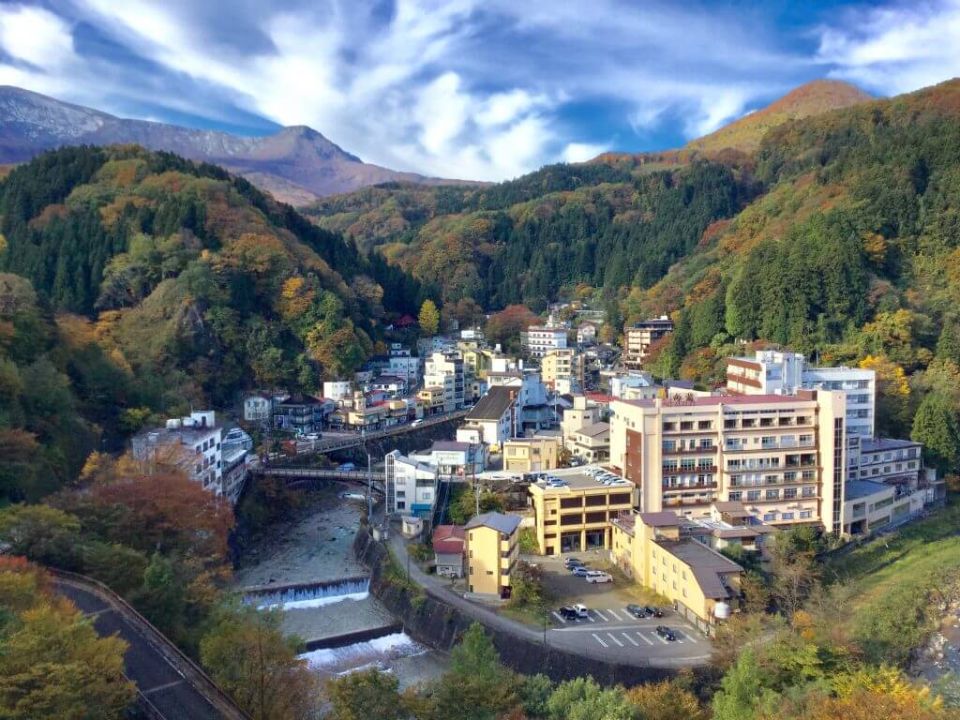
Tsuchiyu Onsen is a hot spring area located in the west of Fukushima City; it consists of many large and small inns, hotels, pubs, and souvenir shops next to each other. There are 3 foot baths in the hot spring area, each with a different name: “Tsuchiyukko” – located in Higashi Karasugawa Shinsui Park; “Tsukinoyu-buje” – located at the foot of Tsukinoyu-bashi Bridge; “Kajikanoyu” – located at the foot of Arakawa-obashi Bridge. In addition, there are 2 public baths, “Nakanoyu” and “Kokeshiyu”.
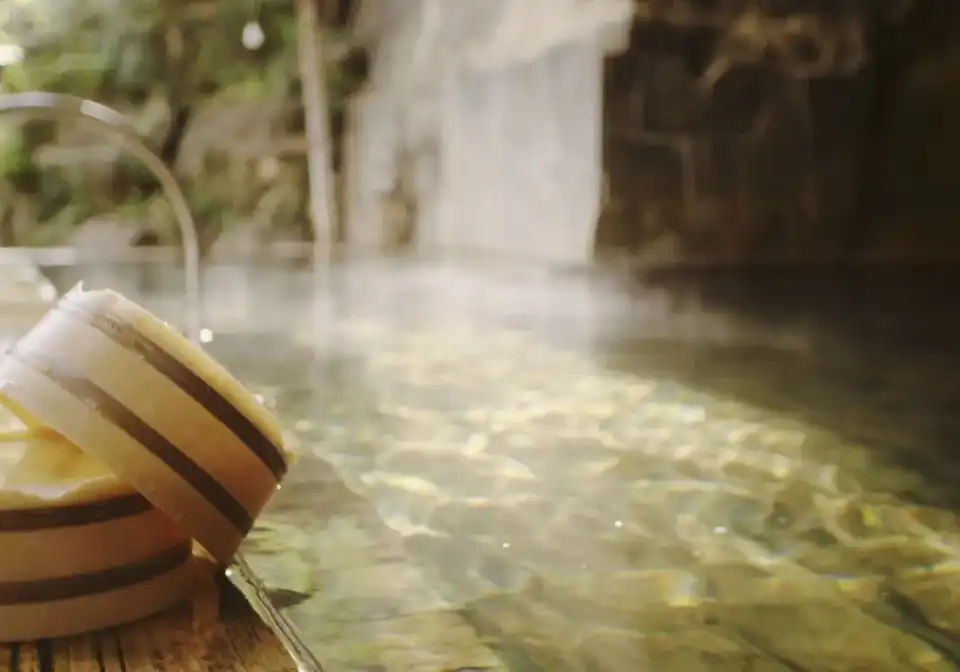
In addition to the hot springs, Tsuchiyu is also known as the village of Kokeshi – a type of wooden doll made in northeastern Japan. There is a building called “Kokeshi-do”, which gathers many wooden Kokeshi dolls, located in a high position; from there you can look down on the hot spring area.
Tsuchiyu Onsen is also famous for its flowers. Every spring, the rows of Sakura trees along both sides of the hot spring road bloom, attracting many tourists to visit and admire the flowers. In addition, there are many other flowers blooming all year round, such as Mizubacho growing in Nidanuma Pond; Himesayuri growing in Tsutsumigadaira
Matsukawa-ura Bay, a place not to be missed when experiencing Fukushima

Matsukawa-ura Bay is located facing the Pacific Ocean, in the suburbs of Souma City. Due to the sand deposited at the river mouth, a saltwater lake is formed, separating it from the outside sea. The characteristic of Matsukawa-ura Bay is the rare terrain with a lake next to the sea. Inside the bay, there are a number of large and small islands scattered, opening up a vast natural landscape. The sandy beach and the coastline surrounded by beautiful pine forests are designated as “Matsukawa-ura Prefectural Natural Park”.
Around Matsukawa-ura Bay, there are many tourist facilities such as hotels, guesthouses, and inns built close together, along with seafood markets, strawberry gardens, etc. Here, thanks to the rare terrain of Matsukawa-ura, visitors will be able to freely participate in fun activities such as clam digging, fishing, and picking up pebbles.
Io-ji Temple
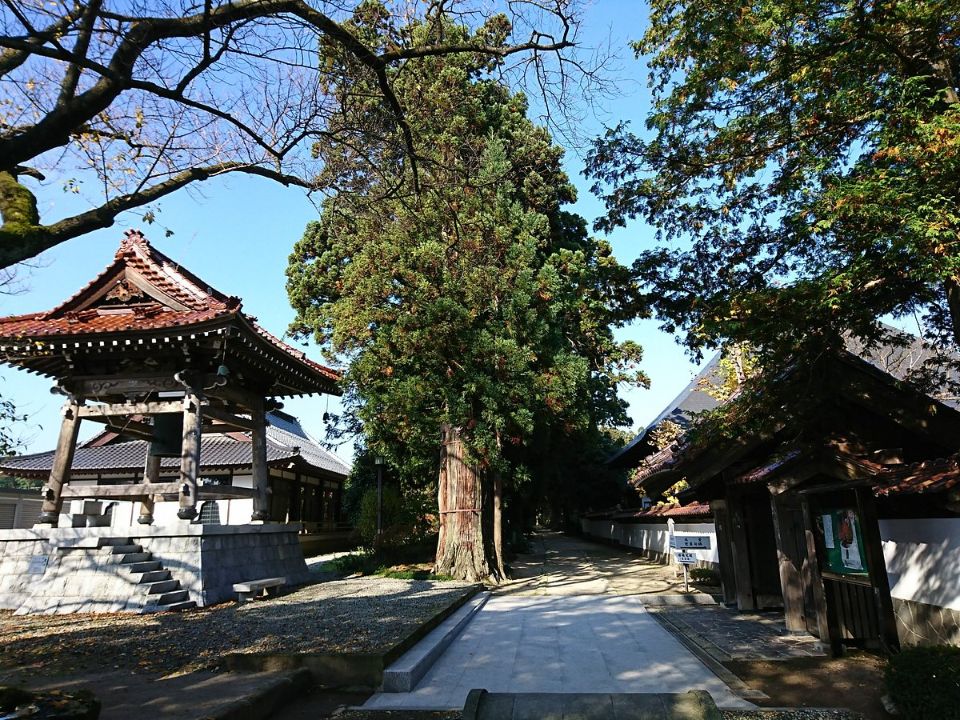
Io-ji Temple is an ancient temple located in Iizaka Onsen, built in the early 9th century. The temple grounds currently preserve many relics of Minamoto no Yoshitsune and his most trusted subordinate, Benkei. In addition, the temple still has a stone stele engraved with a Haiku poem composed by Matsuo Basho to commemorate the Sato family. In addition, the temple has a camellia tree associated with a sad and touching story. Legend has it that the ultimate pain of Tsugunobu and Tadanobu’s mother is contained in this camellia tree, so it never blooms but only buds and withers.
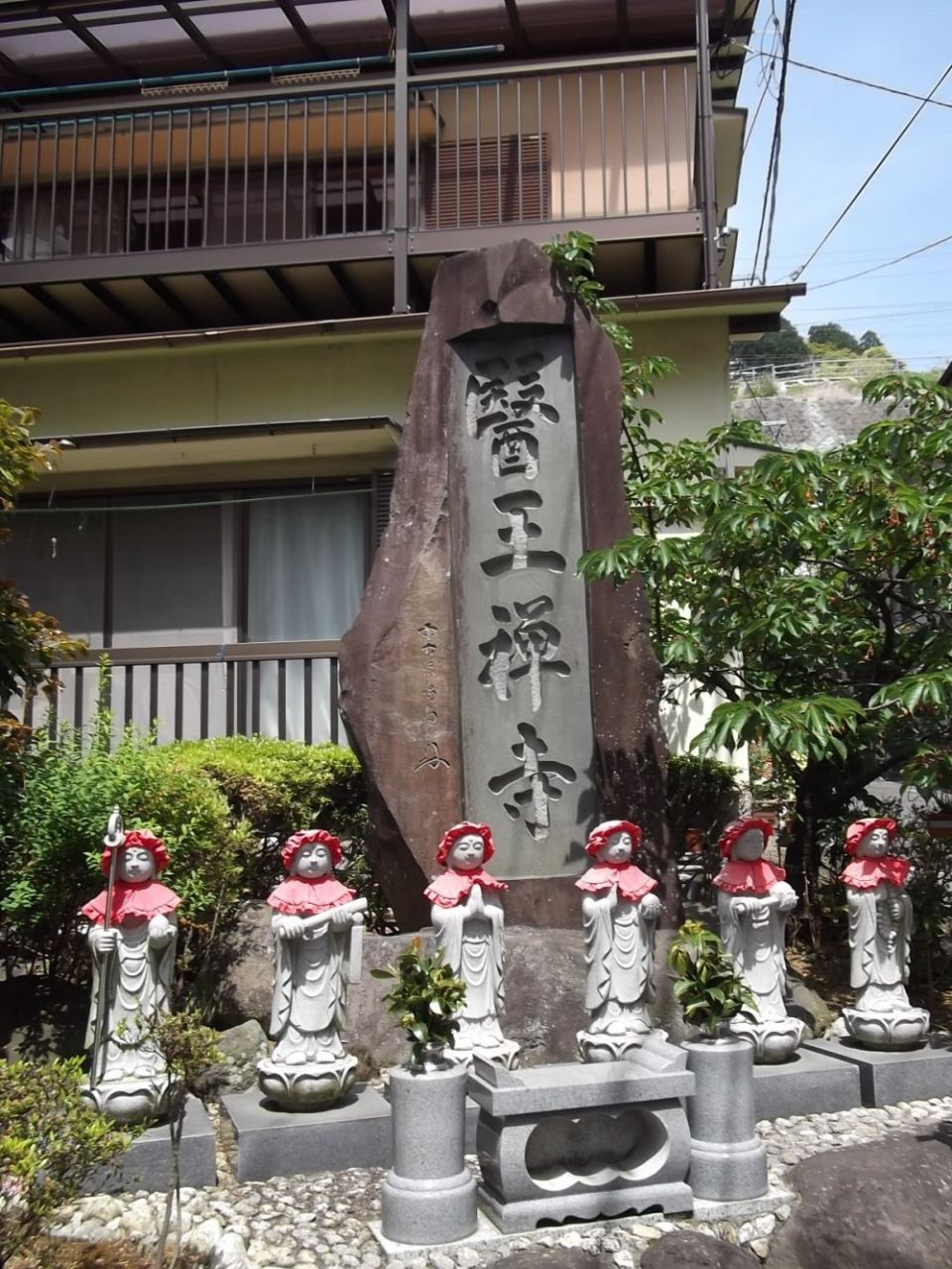
Mount Shinobu
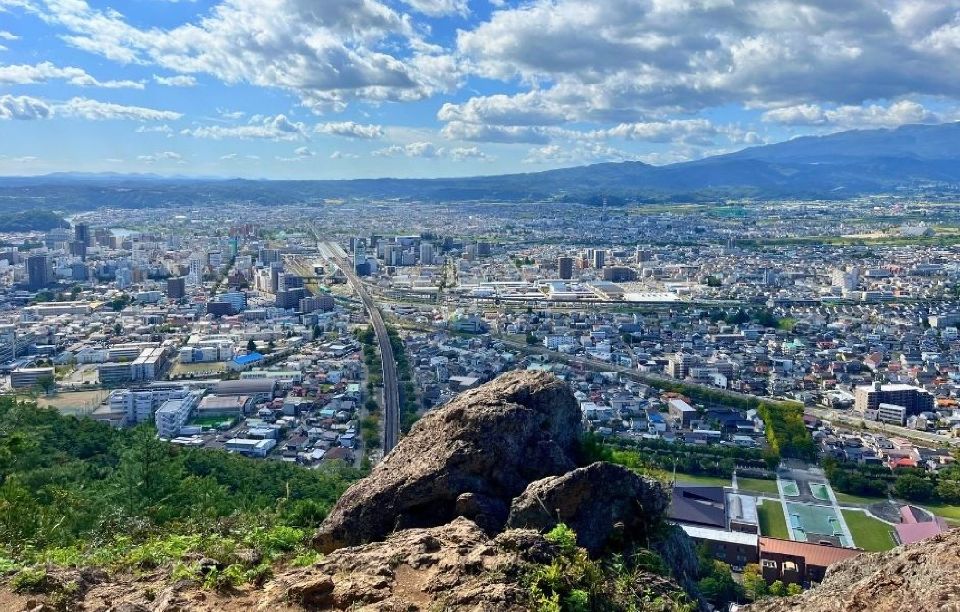
Mount Shinobu is a 275m high mountain in Fukushima City and is the symbol of the city (the mountain is located in the middle of the city). The mountain top is divided into 3 peaks, each peak has a Shinto shrine: Haguro Shrine, Gassan Shrine, Yudonosan Shrine. On the mountain, in addition to the shrines, there are many ancient relics and temples. The path leading to the shrines for worship is used as a walking path today. Near Mount Shinbobu, there are other cultural attractions such as the Fukushima Prefectural Museum of Fine Arts, the Koseki Yuji Memorial Hall, and the Iwaya Kannon Statue. In spring, Mount Shinobu is also one of the famous cherry blossom viewing areas in Fukushima Prefecture.
Lake Inawashiro
The waters of Lake Inawashiro are the most enchanting tourist destination in Fukushima. Looking into the crystal clear water, you will see the reflection of the towering Bandai Mountain and the sky. Known as the “Heavenly Mirror Lake”, this is also the fourth largest lake in Japan.
In autumn, the landscape around the lake changes with the brilliant red of the golden leaves. The grass along the road turns into an impressive colorful picture, creating a poetic and romantic space. Walking around the lake, visitors will feel the perfect harmony between nature and autumn.
If visitors are looking for peace and tranquility, Lake Inawashiro is the ideal destination. Immersing yourself in the immense beauty of the lake and the mountains in the distance, visitors will feel the harmony between nature and the soul. This is a great time to escape from everyday life and find peace.
Especially in the summer, the air here is milder than many places. Coming here, visitors can participate in water games, camp on the lake shore, or enjoy the scenery by yacht.
If you come in the fall, the weather changes, the scenery here is immersed in red. Stroll along the road to enjoy the colorful foliage and breathe the dust-free air.
In winter, the lake is covered with white snow, creating a beautiful beauty. This is also the stopover for migratory swans every winter. Inawashiro has its own beauty in each season and each season attracts many tourists to visit.
Aizu Higashiyama Onsen Hot Spring
Located in the west near Lake Inawashiro, Aizu Higashiyama Onsen hot spring contains Sulfate salt, so it is said to be good for arteriosclerosis, chronic dermatitis, chronic gynecological diseases, treating open wounds, burns… Moreover, when you travel to Japan to Aizu Higashiyama hot spring in Fukushima, you will come to rich nature and long old towns, as if returning to ancient times. In particular, near Aizu Higashiyama Onsen hot spring is the famous ancient Tsuruga castle.
What to eat in Fukushima?
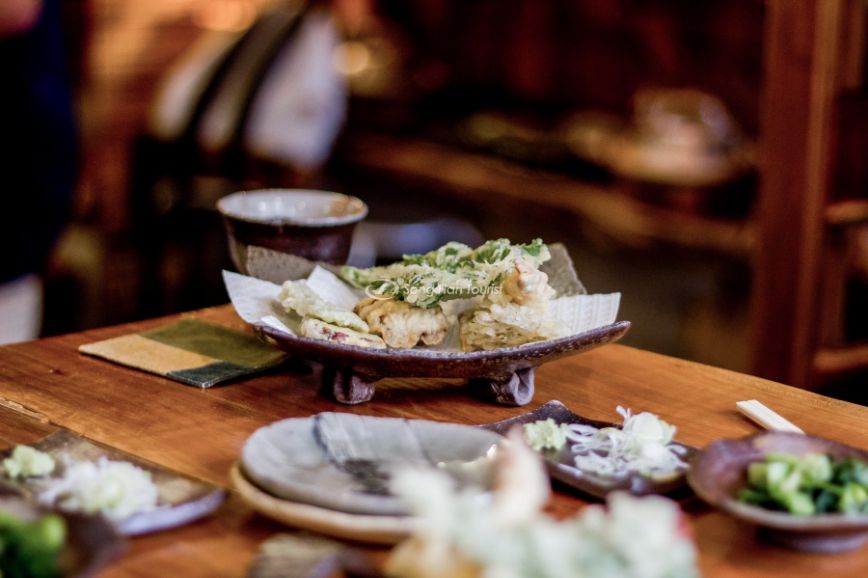
Cuisine is an indispensable part of experiencing Fukushima with fruits such as peaches, grapes, pears. Don’t miss the opportunity to enjoy sweet and juicy Fukushima fruits. There are also seasonal fruit picking experiences here, so find out and pocket the information right away. Another equally attractive local dish is Iizaka Ramen with thin, flat noodles and Ika Ninjin pickled squid with carrots… Don’t hesitate to try this dish that can only be enjoyed here.
Iizaka Ramen
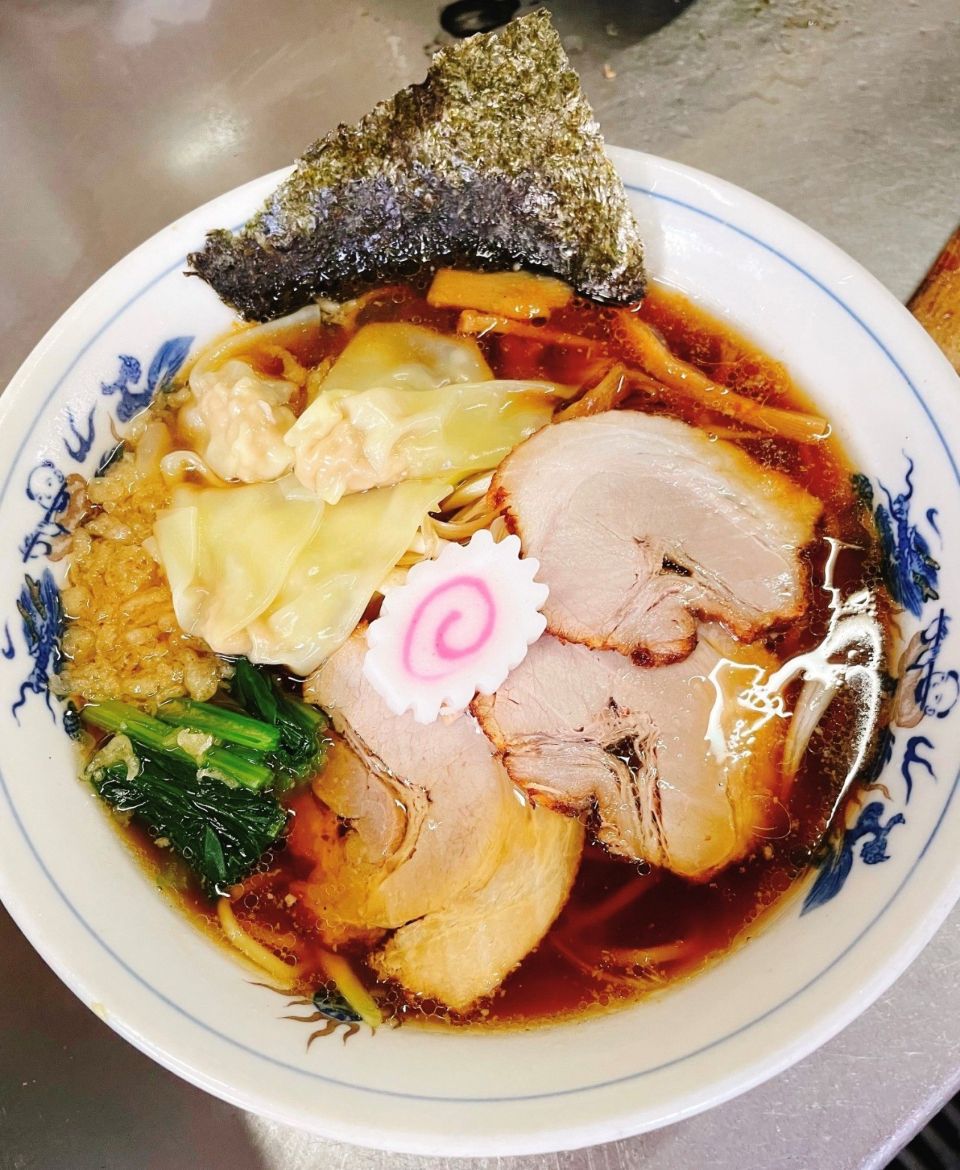
With thin noodles, Iizaka Ramen is a type of noodle that is quite different from many other types of noodles in Japan. Iizaka Ramen noodles are served with a few pieces of meat and a slice of seaweed. When you eat it, you will find that the taste of Iizaka Ramen is absolutely impeccable. When you come to Iizaka Onsen, in addition to bathing in the hot spring, enjoy this Iizaka Ramen noodle dish, it is so delicious.
Sukiyaki
Sukiyaki is a famous dish of Fukushima Prefecture. This famous dish in Japanese cuisine is famous thanks to the chicken of the Kawamata region.
Because the Kawamata region has a cool climate, it is suitable for raising chickens. The chicken here has a chewy texture and crispy skin, making the Sukiyaki more tasty. In addition to chicken as the main ingredient, Sukiyaki also uses other ingredients such as bean sprouts, onions, cilantro, tofu… All of these foods when cooked give a special delicious taste, unmatched by anything else.
Kitakata Ramen
Kitakata Ramen is one of the types of ramen noodles in Japanese cuisine. However, this type has its own special features that make visitors amazed. The chefs take advantage of the super clean water source in Kitakata to prepare this unique noodle dish. The water here is also often used to make wine, miso, soju…
Kitakata Ramen has a sweet taste from pork and a light taste from the traditional soup. You can enjoy this ramen in the morning to stimulate your taste buds for a more exciting new day.
Not only a favorite local dish, Kitakata ramen is also one of Japan’s national dishes. This dish comes from the small town of Kitakata in Fukushima City. The broth is a combination of soy sauce, tonkotsu (pork bone) and sardines. Visitors will almost always find it topped with a large portion of chashu (sliced pork).
Kozuyu
Kozuyu is the “soul” dish of Fukushima with the broth often served with carrots, bamboo shoots, mushrooms, konjac and most importantly, dried scallops. All of these ingredients combine to provide a meal rich in vitamins and nutrients. This is a local favorite, visitors will see Kozuyu served on holidays, at religious ceremonies and even on birthdays.
Ika Ninjin – pickled squid with carrots
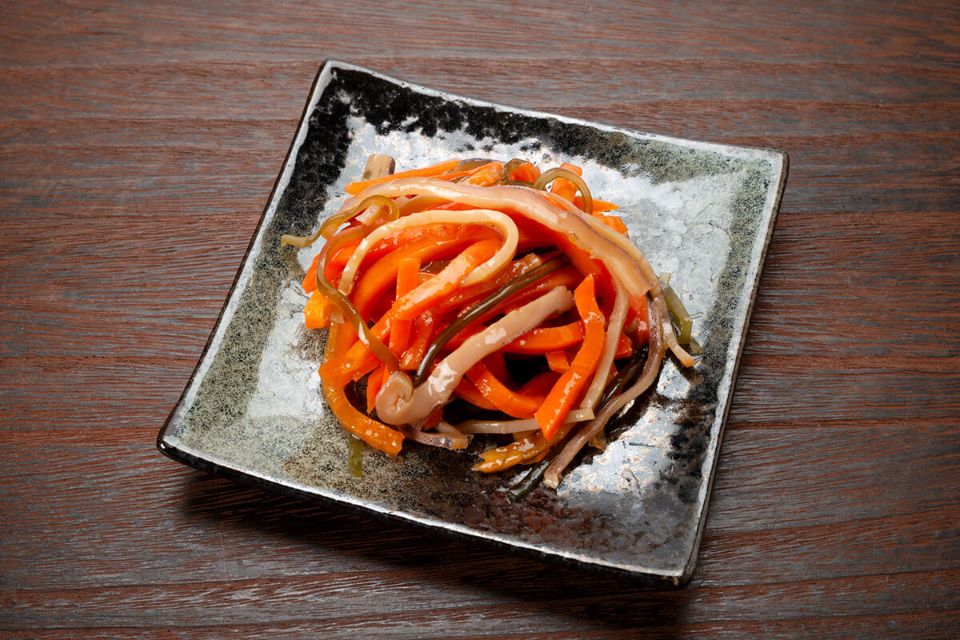
Just hearing the name, Ika Ninjin is pickled squid with carrots. This is one of the typical dishes in Fukushima Prefecture. After being caught, the squid is specially treated to ensure freshness and then pickled with carrots (similar to Vietnamese salad). This dish is very refreshing and not greasy, if you are someone who does not like fried foods, Ika Ninjin is a very reasonable choice.
Aizu Tea Ceremony
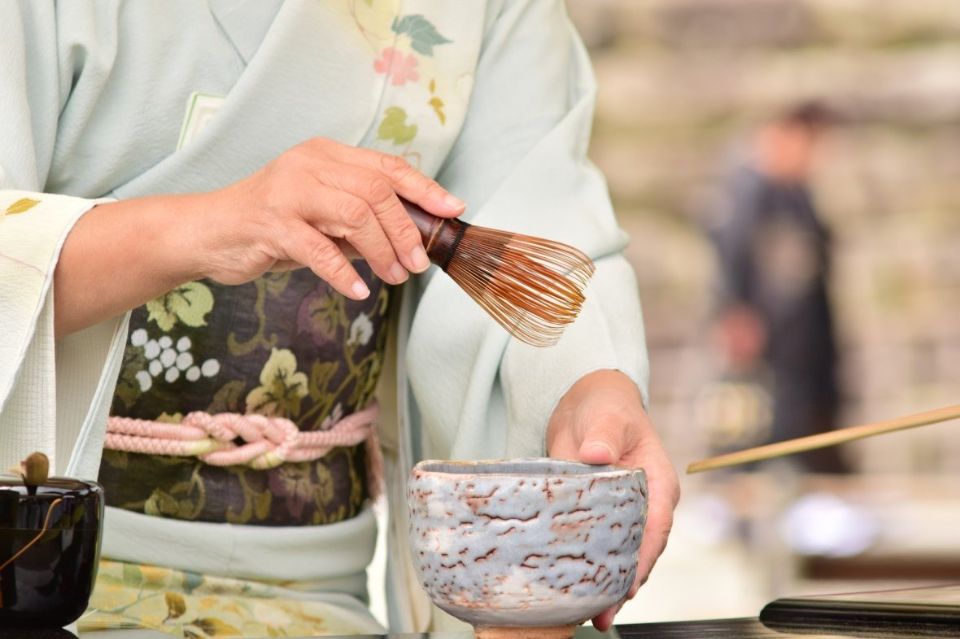
When visiting Tsurugajo Castle, visitors should not miss visiting the Rinkaku Teahouse located inside the Castle grounds. Surrounding the teahouse is a beautiful Japanese garden. What’s more, visitors can enjoy traditional Japanese tea with a seasonal dish and admire the beautiful foliage.
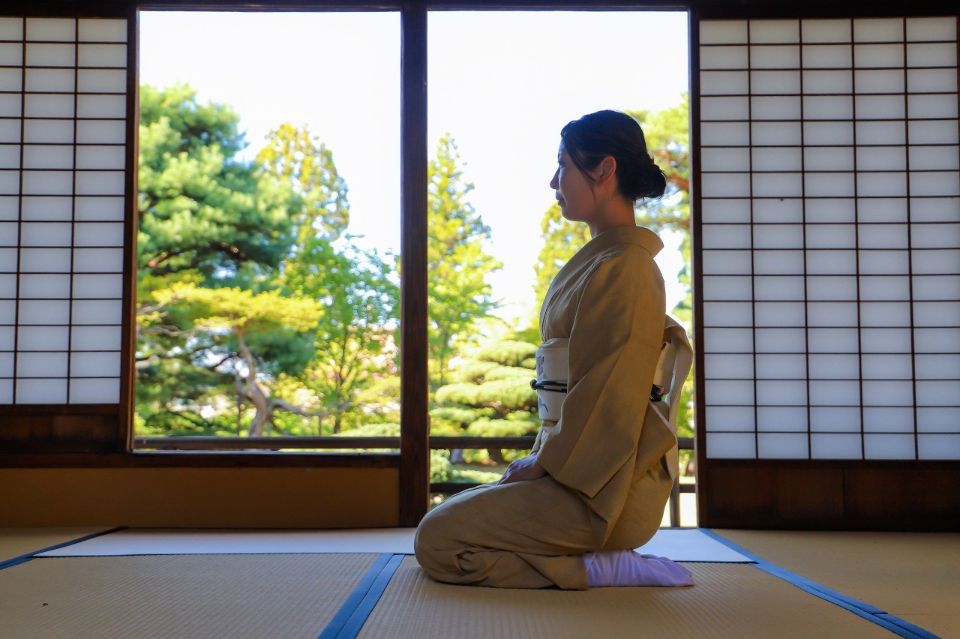
Sake
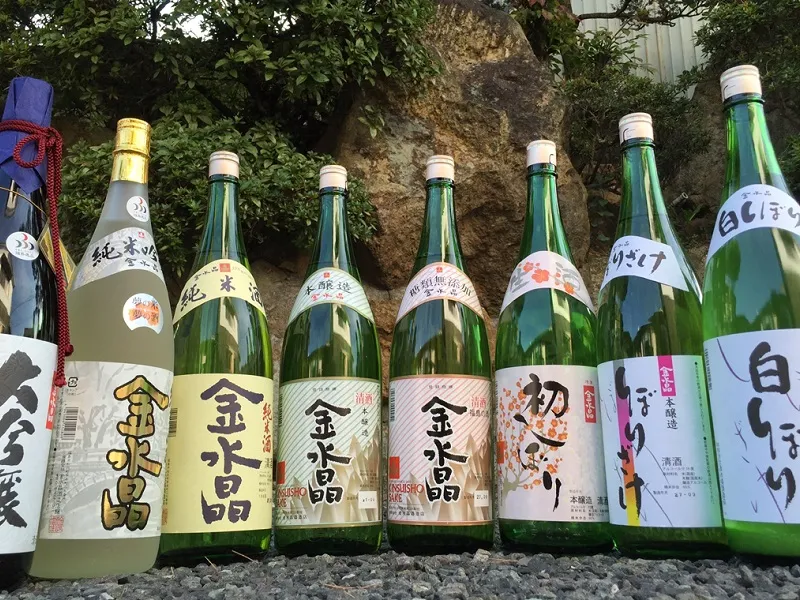
Fukushima sake is light in alcohol with a mellow aroma and natural sweetness from the rice. Sake made in Fukushima is often sweeter than sake made in other prefectures, it is smooth and soft. Above all, Fukushima sake is easy to pair with many types of food.
Negi soba
Negi Soba (Takato Soba noodles) is a hit with first-time visitors with its unique way of eating. Unlike other types of soba noodles, when you visit Fukushima, you will experience enjoying soba noodles with leeks. This dish has a long history, but the tradition of eating soba with leeks is said to have originated in Ouchi-juku when a restaurant used leeks to add a layer of flavor.
Where to stay in Fukushima?
Fukushima is famous for its natural hot springs and many minerals that are good for your health, so there are many ryokan around here. This is not only a place for tourists to stop and stay overnight, but also a place for you to step into and explore traditional architecture, culture and local cuisine. I love this type of accommodation, I stay there every day.
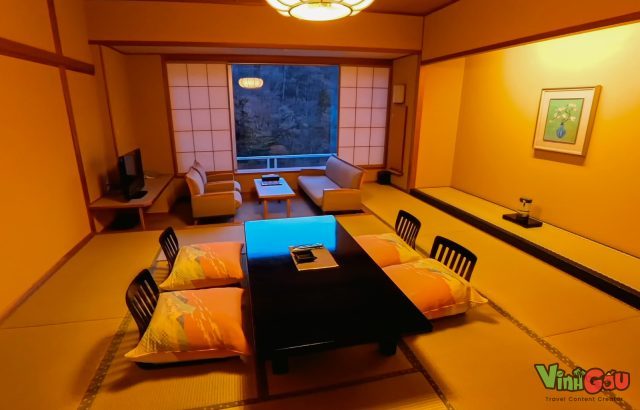
Ryokan are sometimes as big as hotels, however, the rooms are designed in the style of rooms that you may have seen when reading Doraemon. Inside the main room there is only a tea table, the floor is covered with tatami (traditional mats) which is very soft to walk on. Around 6pm, the staff of the Inn will come to take out the mattresses, pillows and futons (mattresses spread on the floor) for the guests to sleep in the empty area around the table. For someone who likes to roll around like me, sleeping on the floor is very convenient for me to roll around.
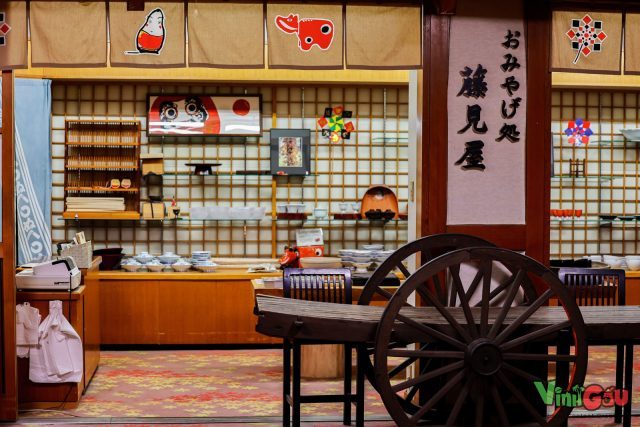
The price of staying at a ryokan is usually higher than at a hotel because they often include local meals where most of the ingredients are sourced locally and come with delicious sake. And you can also enjoy the hot springs when bathing in the onsen at these ryokans. It’s not a compliment, but every time I finish bathing in the onsen, the quality of my sleep improves a lot.
Some ryokans I’ve experienced for your reference.
Takumi no Kokoro Yoshikawaya

The rooms here are the best of the ryokans I’ve stayed at, the food is super delicious (depending on the season, the dishes may change) and the view was very nice. On one side is the view of the mountains, forests and rivers – suitable for autumn or winter. On the other side is the row of beautiful cherry blossom trees. Love it!

Kobōshi no Yu Ryokan: Senshintei

Senshintei: located near Yunokami Onsen Station. It’s very quiet, cozy and very artistic. Inside the inn, there is a space displaying beautiful paintings of the four seasons in Fukushima.
In addition to a delicious dinner made from local ingredients, I also got to experience how to make mochi in this area.

Hana No Yu Ryokan
The room seems a bit older than the two ryokans I mentioned above, the view is nothing special. The food here is delicious.

My dinner was also enjoyed by a performance of the Hyottoko dance, which has a history of about 300 years. Hyottoko is a character wearing a mask that sometimes covers half of the face, sometimes covers the entire face, but the audience can feel their humor through the facial expressions and the artist’s dance.

The Japanese believe that the Hyottoko dance can bring good harvests and prosperity to the descendants of those who perform it.

Suggested Fukushima 5-day, 4-night travel itinerary
- Day 1: Arrive in Fukushima – Hanamiyama Flower Garden – Hanamomo no Sato Flower Garden
- Day 2: Marunaka Strawberry Garden – Nihonmatsu Castle – Sake Brewery – Nicchu Railway
- Day 3: Samurai Mansion – White Crane Castle – Yunokami Onsen Station
- Day 4: Ouchijuku Ancient Village – Nugochi Museum – Kaizeisan Park
- Day 5: Miharu Takizakura – Leave Fukushima
Fukushima welcomes more than 100,000 international visitors each year in the prefecture, thanks to its rich natural, cultural and delicious cuisine. Putting Fukushima on your list of places to visit and experience when traveling to Japan will definitely make for an unforgettable trip.
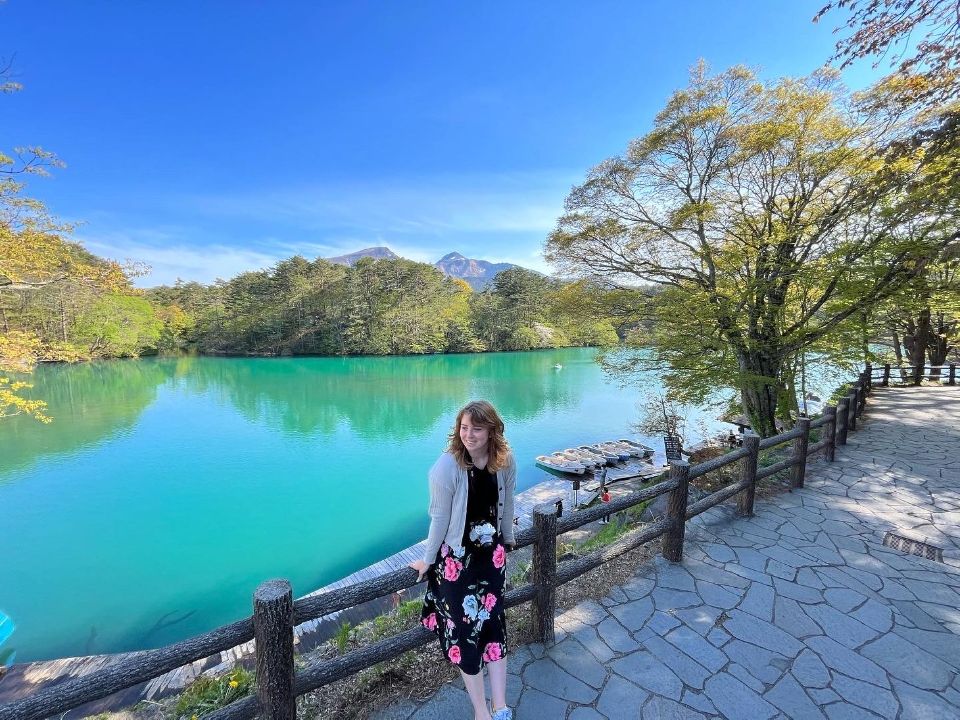
Fukushima has its own unique appearance in each season, sometimes showing off its brilliant colors, sometimes shy and gentle. No matter which season you visit, you will definitely have memorable experiences.
The post is complied by Living Nomads from many different sources. If you find any images or text that belong to you, please contact us, so we can credit you or give us permission to use them. Thank you very much!
Some best day tours, trips, activities and transfer services, tickets in, from and to Fukushima you can refer to
- Atsushio Onsen Yamagataya Experience in Fukushima
- Tokyo to Fukushima (Fukushima) trains
- Goshikinuma Snowshoe Walking Tour in Fukushima
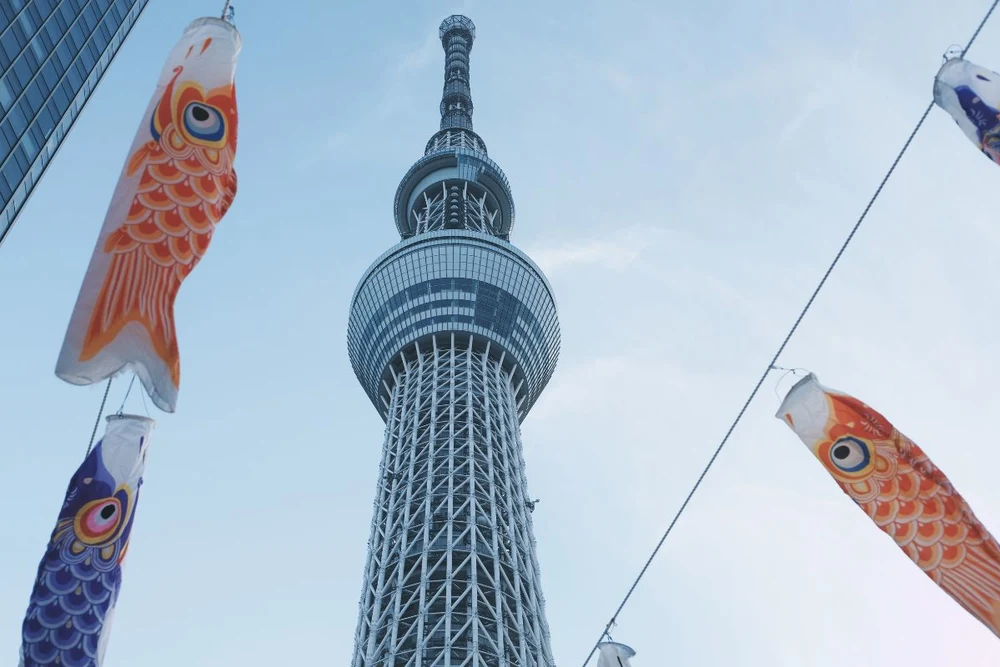
Read more Japan guide here.































![10 best airports in Asia in 2016 [RANKED] kuala-lumpur-international-airport-best airports in asia in 2016 by skytrax ratings](https://livingnomads.com/wp-content/uploads/2016/08/29/kuala-lumpur-international-airport-best-airports-in-asia-in-2016-by-skytrax-ratings-218x150.jpg)








